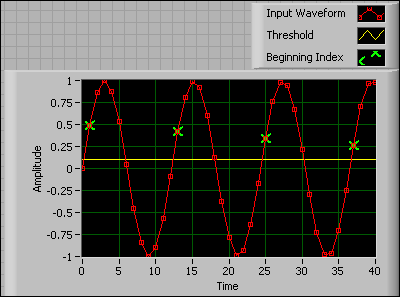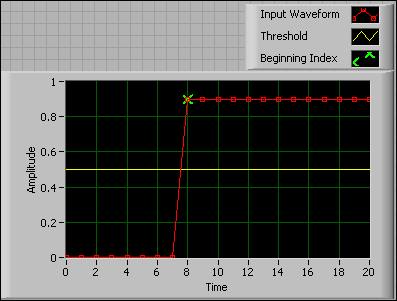Threshold Detector VI
Owning Palette: Signal Operation VIs
Requires: Full Development System
Analyzes the input sequence X for valid peaks and keeps a count of the number of peaks encountered and a record of Indices, which locates the points that exceed the threshold in a valid peak.

 Add to the block diagram Add to the block diagram |
 Find on the palette Find on the palette |






